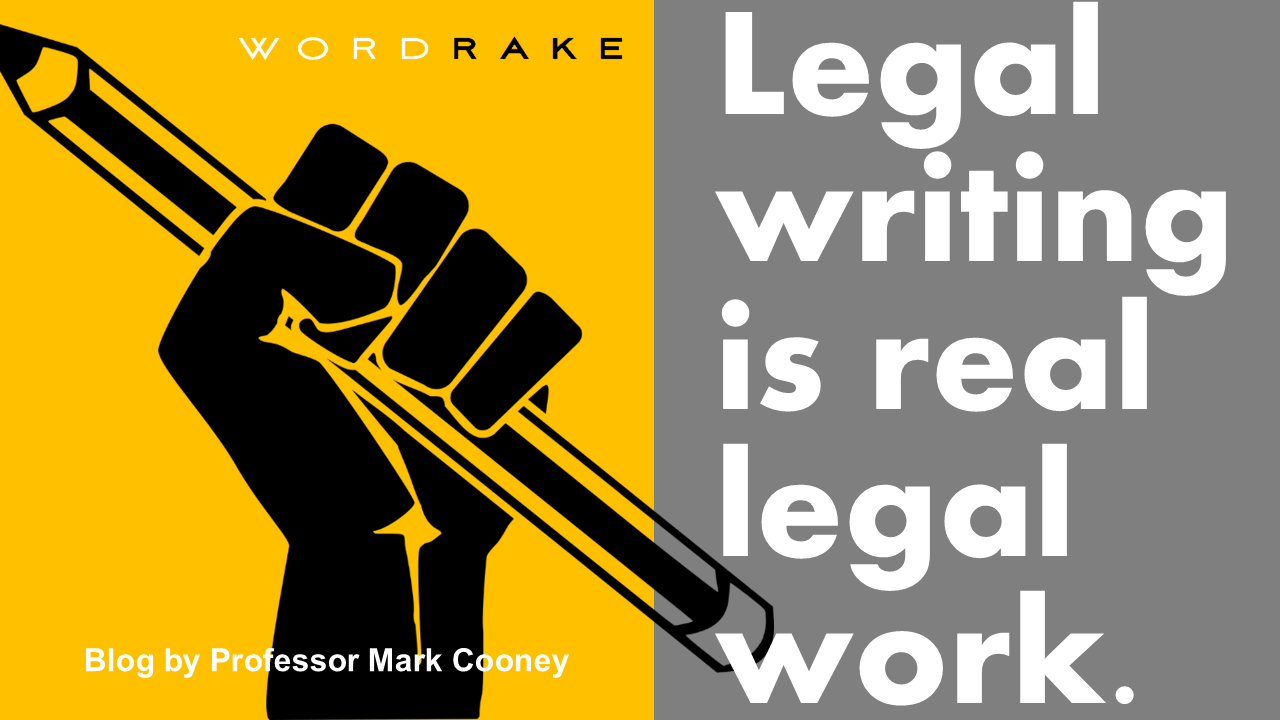Attorneys have more choices than ever for tools to help you write well. The trick is knowing which tool is best for what job. And a lot comes down to what you’re trying to write. In this article let’s take a look at two well-known tools and when you might choose one or the other. (Spoiler alert: The best answer might be both!)
Let’s Get the Easy One Out of the Way
If you’re looking for a tool to help draft new content, then Copilot wins this one by default. WordRake is an editor not a content generator. If you’re looking to get from a blank page to a plausible first draft, then Copilot is the choice.
Copilot is also integrated into your Microsoft 365 environment, which means you can ask it to refer to your emails, Teams chats, and other files when drafting your new content. That’s an underappreciated capability – I’ve often seen users drafting new content who don’t think to ask Copilot to refer to a related email conversation, for example, as a source for additional information.
And because it’s integrated into Microsoft 365 it also inherits Microsoft 365’s privacy policies which means that anything you create with Copilot stays within your Microsoft 365 tenant and Copilot never trains the public model with your data. From a security and privacy perspective that’s about as good as it gets.
Tell Copilot what you want to create, be as specific as you can, tell it about your audience, point it to trusted sources whenever possible, and give it some indication of what voice and tone you’d like.
You can use a basic prompt like
“Write a blog post about probate”
but you’ll get a lot further if you use one like
“Write a blog post about probate in the state of North Carolina for an audience of seniors who are not very sophisticated on the topic. Refer to https://www.nccourts.gov/help-topics/wills-and-estates/estates as a primary source of information. Keep your tone warm and relaxed, optimistic and helpful. Encourage the reader to contact us if they have further questions or would like help with estate planning.”
And once your draft is created be sure to review it, edit it, and fact-check it.
Improving What You’ve Already Got
Things get more interesting when you have existing content, either human or AI-generated, that you want to improve.
Copilot is great at big picture brainstorming
Copilot can look at your text and suggest ways to make it more persuasive, more professional, more concise, or just about any other adjective you want to use. It can suggest things that the other party might object to or things that you may have overlooked.
Is it always going to have great recommendations? No. But it often will and even when it’s not quite what you were looking for it might inspire some ideas in how you could improve the text.
Copilot is not great at understanding legal nuance
Copilot is a general-purpose generative AI. It can help make your text more readable, but it doesn’t really understand how certain words may have specific meanings in a legal context. As a result, in the pursuit of readability Copilot may suggest phrasing or rewrites that change the meaning of the text in some small but important way.
There are some things you can do in your prompts that may improve this, for example telling Copilot that this is a motion for summary judgement, but it’s still possible that Copilot will use some words inappropriately for a legal document.
That’s one reason why it’s essential that you never show the output of an AI to a client or the court without reviewing it first.
WordRake excels at editing legal writing
Where WordRake really shines is taking a piece of legal writing and helping you to make it clearer or more concise. It was purpose-built by lawyers for legal writing so it respects legally operative phrases and terms of art.
So this:
WHEREAS the Sellers are willing to sell, and Buyer is willing to purchase Seller’s complete interest in Contoso LLC and the Subject Property upon the terms and conditions set forth herein;
Becomes this:
WHEREAS the Sellers are willing to sell will sell, and Buyer is willing to purchase will purchase Seller’s complete interest in Contoso LLC and the Subject Property upon the terms and conditions set forth herein;
Since WordRake isn’t generating any content, and since you have to approve each edit WordRake suggests, the chances of hallucination or “tool-induced error” are next to zero.
The Best of Both Worlds
In many cases the best approach may be to leverage the strengths of both tools. Start with Copilot to help create the first draft. Iterate and have it look for gaps or suggest ways to make broad improvements.
Then take an edit pass yourself to make sure the voice and tone is what you want, and to verify any factual claims or case citations in the content.
Finally, when you’re ready to polish the document before sending it on to your client or the court give WordRake a chance to help you make the content clearer or more concise.
Using the right tools, at the right times, can help you put your best work forward.
About the Author
Ben M. Schorr has spent more than 35 years in legal tech including 10 years in-house at firms in Los Angeles and Honolulu. He spent 9 years at Microsoft and is now an AI and Microsoft 365 strategist at Affinity Consulting. You can reach him on LinkedIn.









